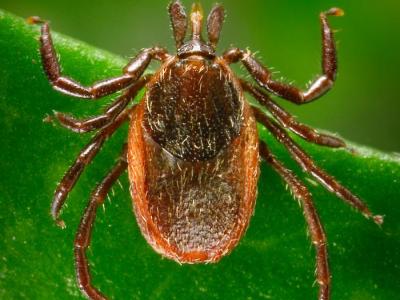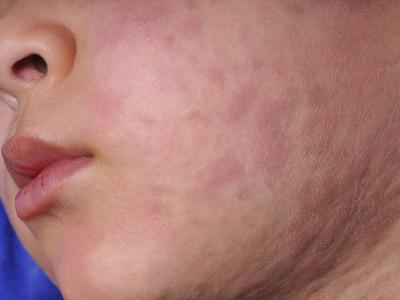Yellow fever case confirmed in rural Brazil
A fatal yellow fever case has been confirmed in a resident of Itatiba, a city in Brazil's Sao Paulo state, located about 50 miles north the state's capital city, according to an Oct 17 city government statement translated and posted yesterday by ProMED Mail, the online reporting system of the International Society for Infectious Diseases.
The man, age 76, lived in a region between the cities of Itatiba and Jundiai. Thirteen monkeys in the area have tested positive for yellow fever, and health officials are investigating another possible human case.
An immunization campaign had been held in the affected rural area in April, reaching about 41,000 people. Local health officials are stepping up vaccination in the wake of the latest dectection.
The ProMED Mail moderator commented that the new human case and numerous cases in monkeys after Brazil's yellow fever outbreak was declared over earlier this year is worrisome, indicating that the declaration was premature. Another moderator said the latest fatal case appears to be due to sylviatic spillover in an undervaccinated population, similar to a pattern seen in Brazil's earlier cases.
Earlier this year, a surge of yellow fever cases in the country—led by a fivefold increase in less than 1 month—set off alarm bells and was Brazil's largest outbreak since 1980. A total of 777 cases were confirmed. In early September, Brazil's Ministry of Health declared the outbreak over.
Oct 17 Itatiba government statement
Oct 24 ProMED Mail post
Sep 7 CIDRAP News scan "Brazil declares end of yellow fever outbreak"
Uganda's Ministry of Health reports 1 confirmed, 1 suspected Marburg case
On its Twitter feed today, Uganda's Ministry of Health (MOH) said the number of Marburg cases in Kween district in the east remains at two—one confirmed and one probable—as it ruled out two suspected cases in healthcare workers reported earlier in the day by the World Health Organization (WHO).
The MOH numbers, however, do not include what is considered to be the index patient, a man in his 30s who is listed as a probable case by the WHO. He died on Sep 25 and was buried Sep 27 with no samples collected. The confirmed case involves his 50-year-old sister, who died from Marburg after caring for and participating in the burial of her brother.
Today's MOH update said a 39-year-old man in isolation in Kween district represents the probable case. The man, from Kamwam parish in Kaproron Subcounty, had vomiting, nausea, intense fatigue, headache, and abdominal pain for 5 days. Blood samples are being tested for Marburg, the agency said. The man had no known contact with any other cases.
In an update earlier today, the WHO listed two healthcare workers as suspected of having Marburg virus disease. They both had close contact with the 50-year-old woman, but Uganda's MOH today said testing in samples from the two professionals came back negative for Marburg, as well as for related hemorrhagic fever viruses such as Ebola.
Today's WHO update lists a brother of the first two patients as a suspected case, while an update yesterday from the WHO's Africa regional office classified his case as probable and said he had symptoms consistent with Marburg. The update from the regional office also mentioned a suspected case involving a 2-year-old child that is not included in today's WHO update. The MOH, however, makes no mention of either case.
The WHO today said the brother of the first two cases refused to be admitted to a hospital, returned to the community, and has been lost to follow-up. "There is an ongoing effort to find him," the WHO said.
Uganda's MOH is conducting contact tracing of 66 people who had contact with the index patient and 89 who had contact with the woman, including 44 healthcare workers, the WHO said. The MOH today said the total number of contacts under follow-up in both Kween and Kapchorwa districts is 105.
Uganda MOH Twitter feed
Oct 25 WHO update
Oct 24 CIDRAP News scan on WHO regional update
New York City Legionnaires' outbreak sickens 12
New York City's health department announced yesterday that it is investigating a cluster of Legionnaires' disease cases in downtown Flushing in Queens. In a statement, NYC Health said 12 illnesses have been confirmed in the past 2 weeks.
Most patients have serious underlying health conditions, and ages range from the early 30s to the late 80s. Five people have been hospitalized and are recovering, and seven have been discharged. No deaths have been reported. Officials are working to determine if two more cases are part of the cluster.
Water samples have been taken from all cooling towers in the investigation to test for Legionella, the bacterium that causes the disease. The health department and other city officials are sending outreach teams to transit hubs and senior centers to distribute information about Legionnaires' disease. Also, the health department is organizing a community meeting to share information and field questions and concerns.
Health Commissioner Mary Bassett, MD, MPH, urged people in the area who have respiratory symptoms to seek medical care quickly and warned that people older than 50 and those with compromised immune systems are most at risk. Symptoms typically appear 2 to 10 days after significant exposure to Legionella and can include fever, cough, chills, muscle aches, fatigue, and gastrointestinal symptoms. Most outbreaks have been linked to plumbing systems that can harbor the bacteria, such as cooling towers, whirlpool spas, hot tubs, humidifiers, hot water tanks, and air conditioning system condensers.
Following Legionnaires' outbreaks in 2015, the city passed a law to curb growth of the bacteria in cooling towers, becoming the first US city to adopt robust requirements to ensure cooling tower maintenance. The city has also hired more inspectors and trained city workers on how to inspect towers and increased the capacity for lab testing of water samples.
Oct 24 NYC Health statement
Early neuraminidase inhibitors tied to lower H7N9 deaths in China
An observational study of 160 people hospitalized with confirmed H7N9 avian influenza infections across five waves of virus activity in China found that early treatment of neuraminidase inhibitors was associated with improved survival and reduced viral shedding, according to a study today in Clinical Infectious Diseases.
Chinese researchers examined the medical records of patients admitted to a hospital at Zhejiang University from April 2013 to April 2017, dividing the patients into three groups based on when neuraminidase inhibitor treatment began following symptom onset: within 2 days, 2 to 5 days, and after 5 days. Of the group, 101 received combination oseltamivir-peramivir treatment. The median patient age was 58.5 years, and 103 of the patients had underlying medical conditions.
Of those who were treated within 2 days, 3 (15%) of 20 died, compared with 12 (23.1%) of 52 patients treated within 2 to 5 days and 33 (37.5%) of 88 patients treated after 5 days following symptom onset. Duration of viral shedding was also shorter in people who got the earliest treatment: 4.5 days, compared with as long as 7.5 days in people in the two other groups.
The team concluded that early use of antiviral drugs can reduce the risk of death from H7N9 by nearly half, similar to what's been seen in observational studies in patients hospitalized with seasonal influenza. Also, they noted that the findings echo earlier studies in adults linking early neuraminidase treatment with shorter influenza duration.
The findings affirm recommendations for early treatment, the team said. But they added that, in China's H7N9 outbreak, many patients are farmers who don't generally seek timely treatment and H7N9 symptom onset is often subtle, with nonspecific symptoms, contributing to delayed diagnosis. "Therefore, strengthening the training of primary health care personnel [is] necessary," they wrote.
Oct 25 Clin Infect Dis abstract
CDC alerts US clinicians of possible hurricane-related infectious diseases
The US Centers for Disease Control and Prevention (CDC) yesterday advised clinicians to maintain high vigilance for infectious diseases such as leptospirosis, dengue, hepatitis A, typhoid fever, vibriosis, and flu in people affected by hurricanes, notably in Puerto Rico and the US Virgin Islands (USVI).
In a Health Alert Network (HAN) notice, the CDC said, "Because of compromised drinking water and decreased access to safe water, food, and shelter, the conditions for outbreaks of infectious diseases exist."
Extremely high winds and flooding caused by Hurricanes Irma and Maria heavily damaged buildings and infrastructure in Puerto Rico and the USVI. "Infectious disease outbreaks of diarrheal and respiratory illnesses can occur when access to safe water and sewage systems are disrupted and personal hygiene is difficult to maintain," the CDC said in the HAN advisory. "Additionally, vector borne diseases can occur due to increased mosquito breeding in standing water; both Puerto Rico and USVI are at risk for outbreaks of dengue, Zika, and chikungunya."
The agency listed several hurricane-related recommendations for healthcare providers, such as considering less common causes of respiratory and gastrointestinal conditions in patients who have traveled to affected areas.
Oct 24 CDC HAN advisory












